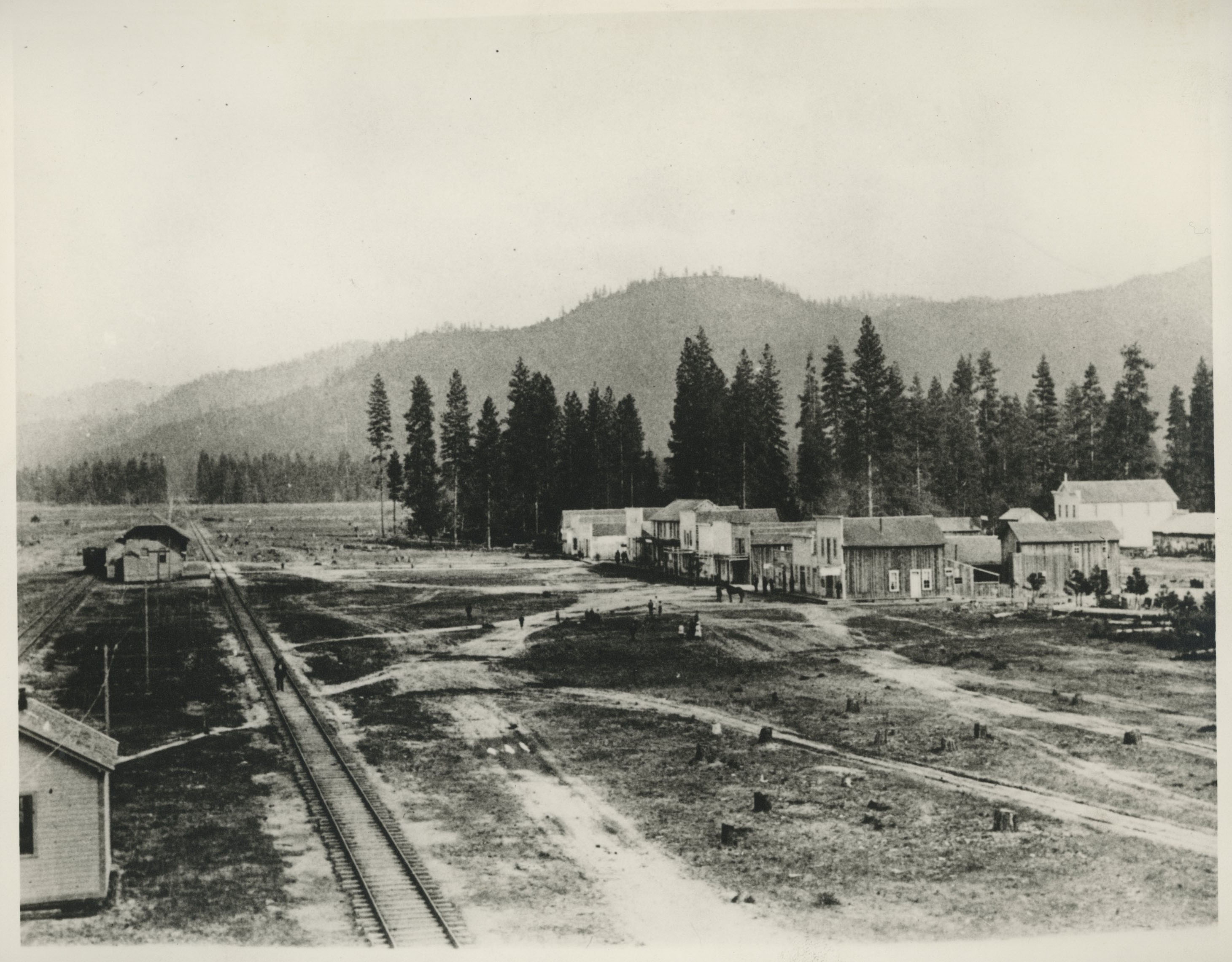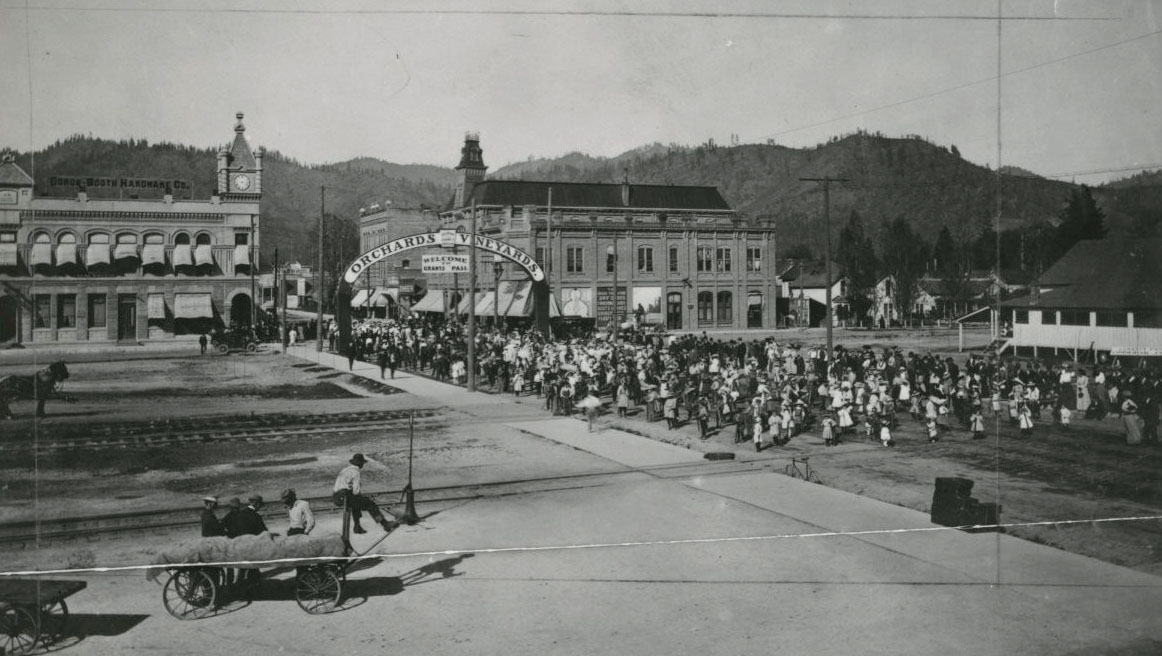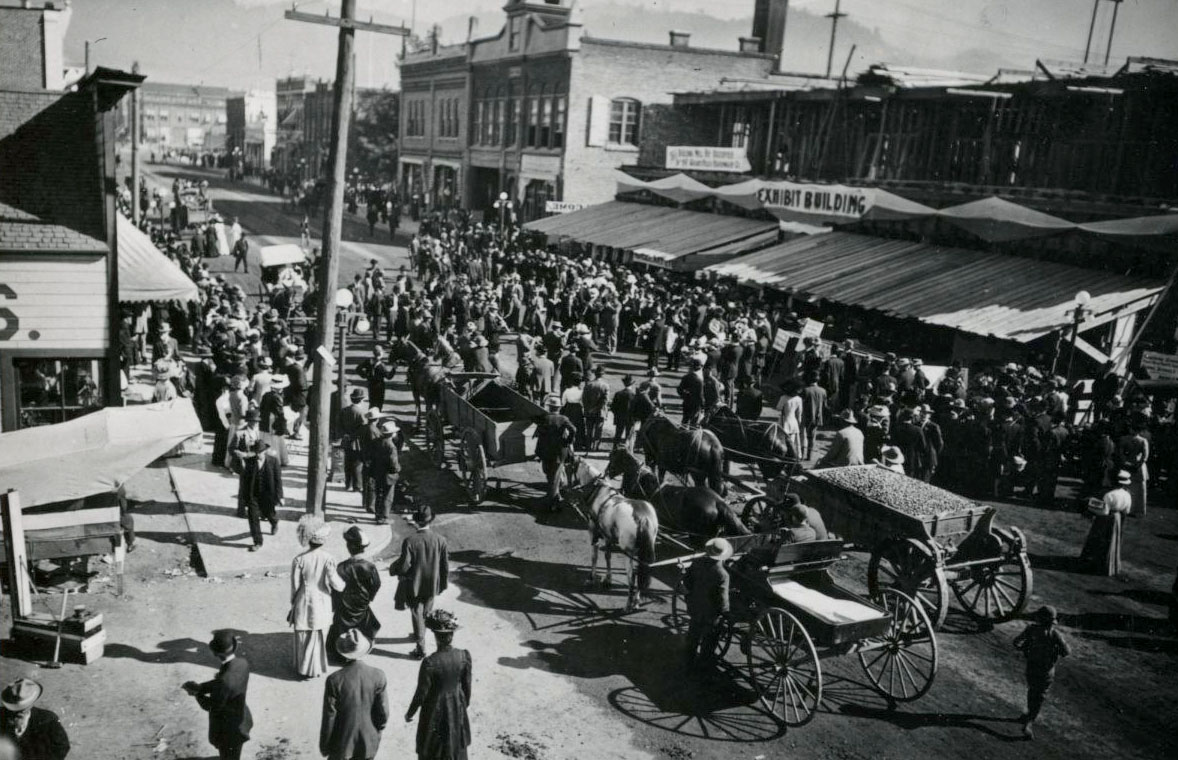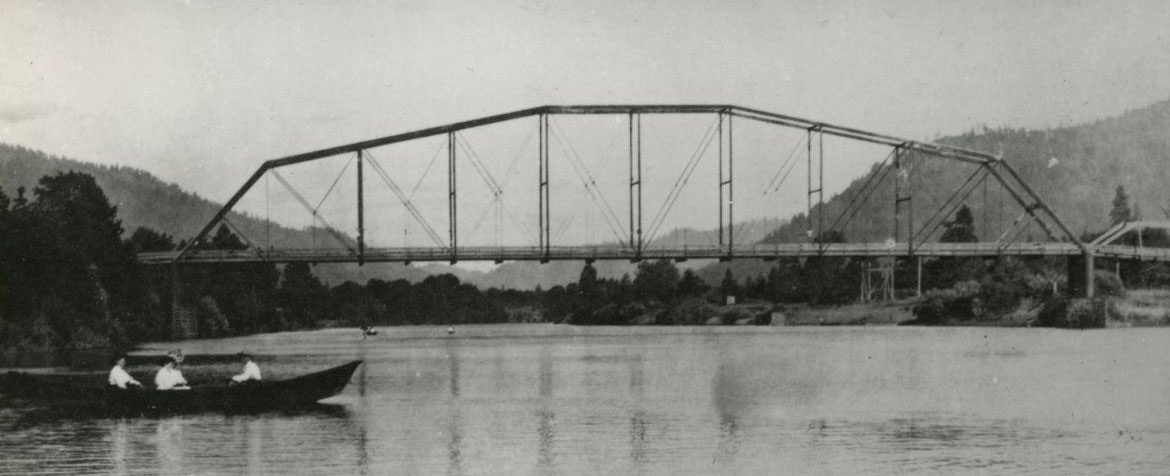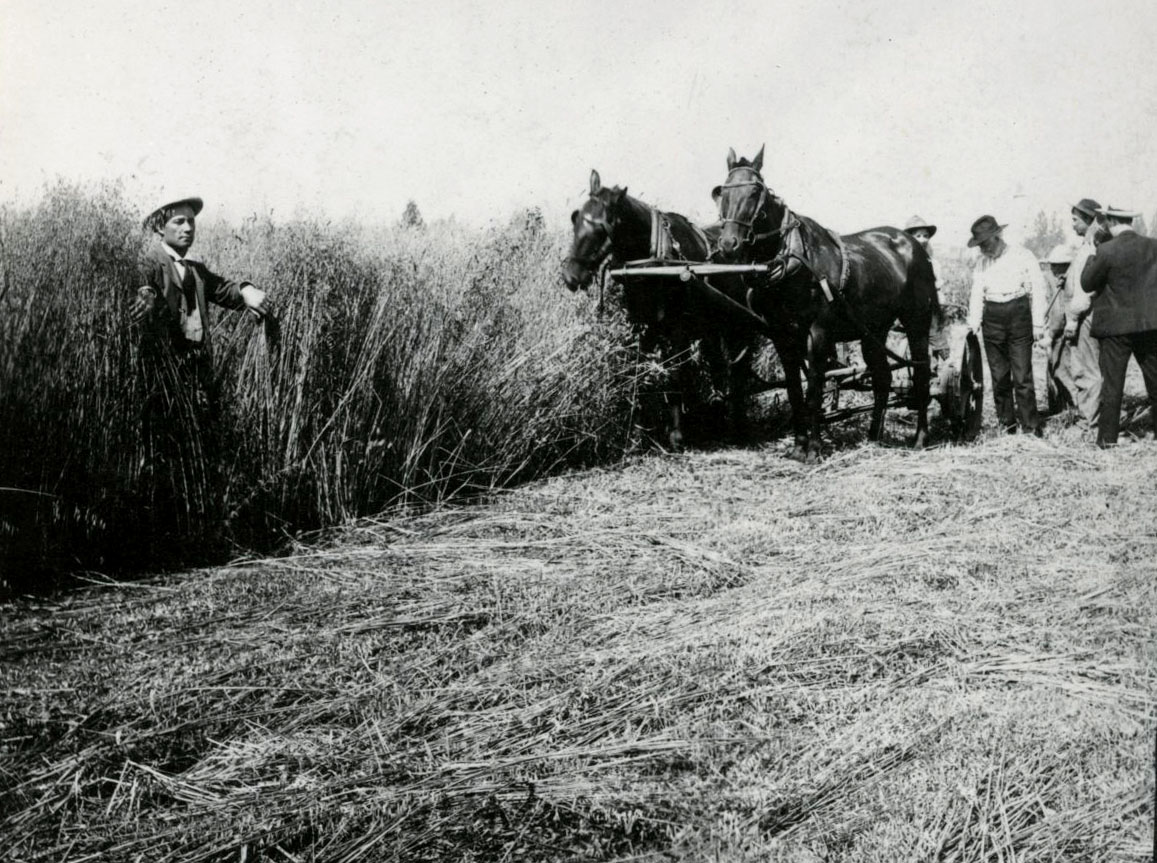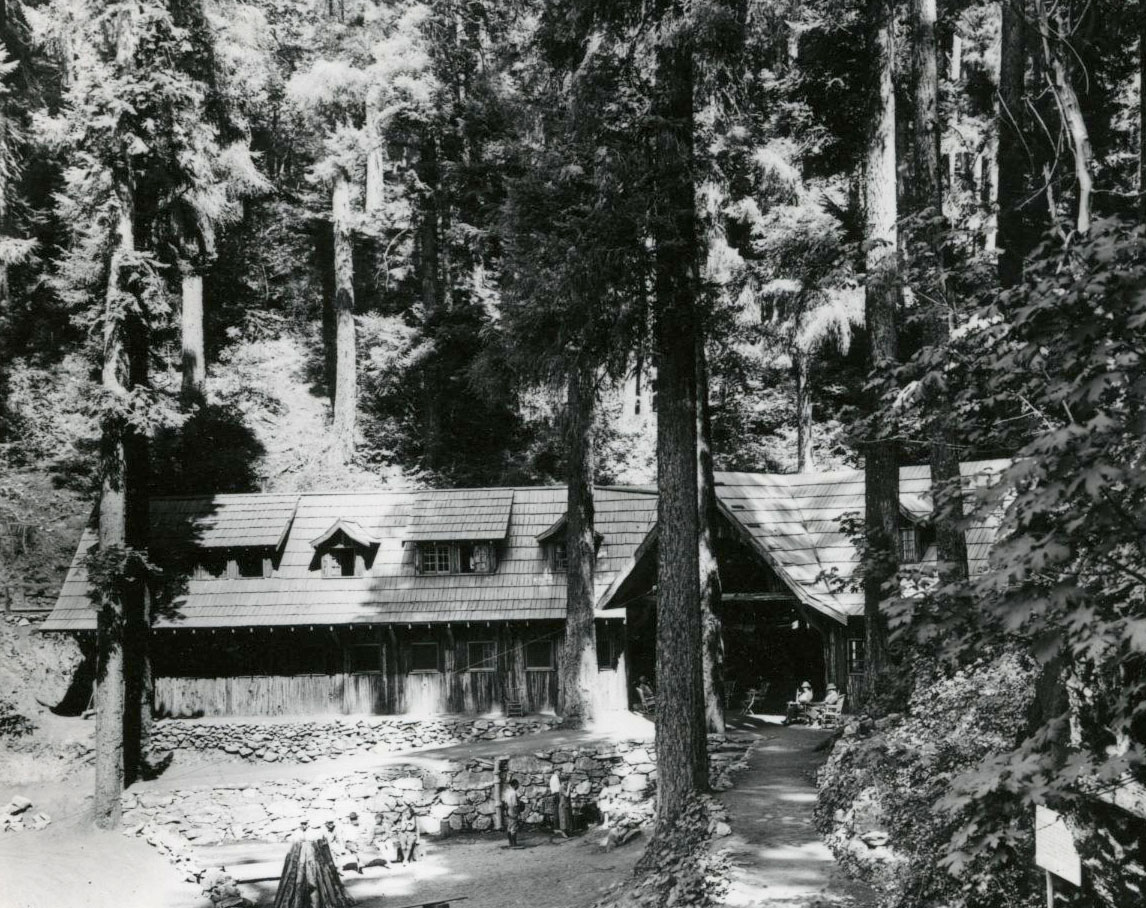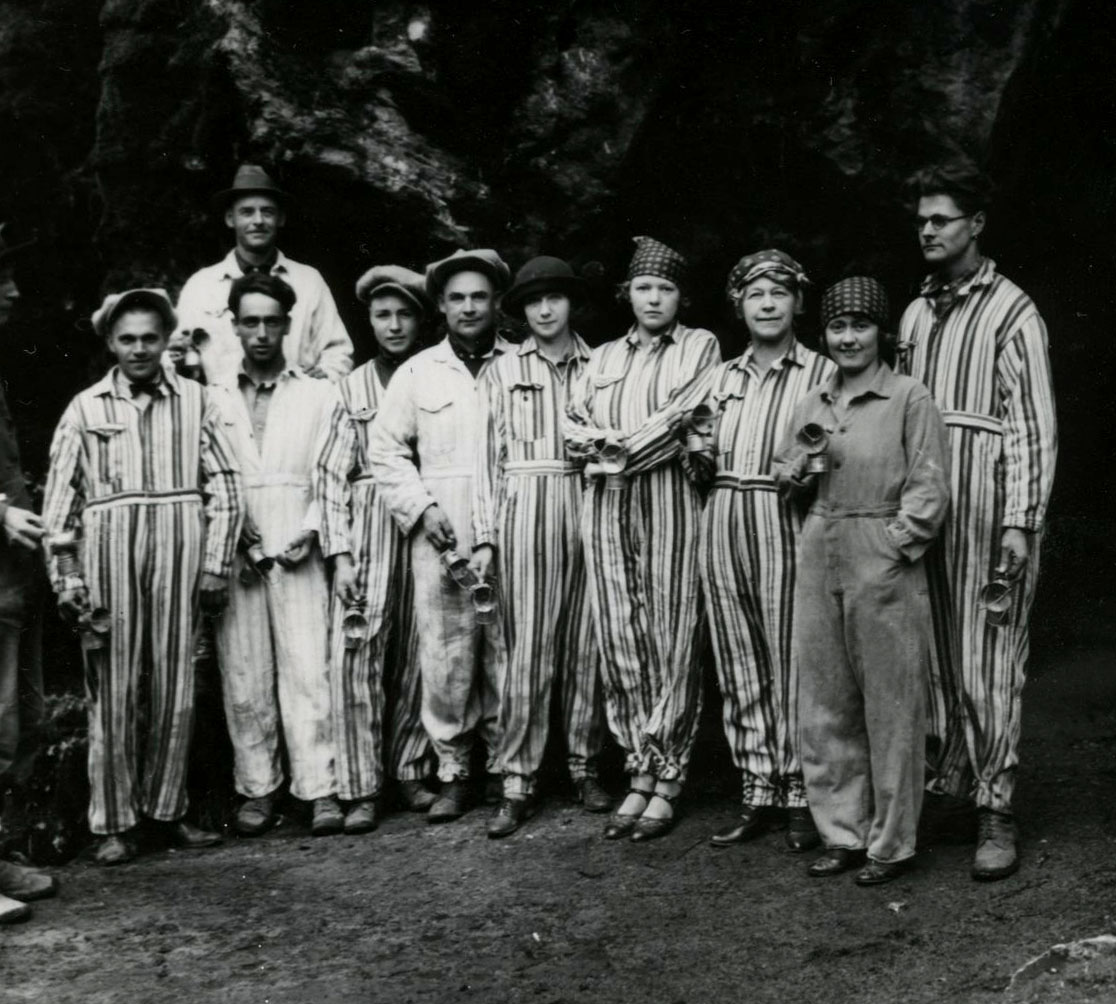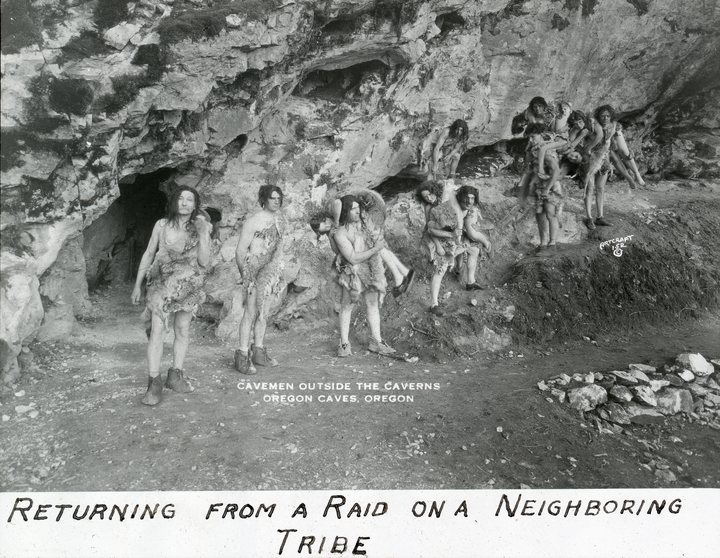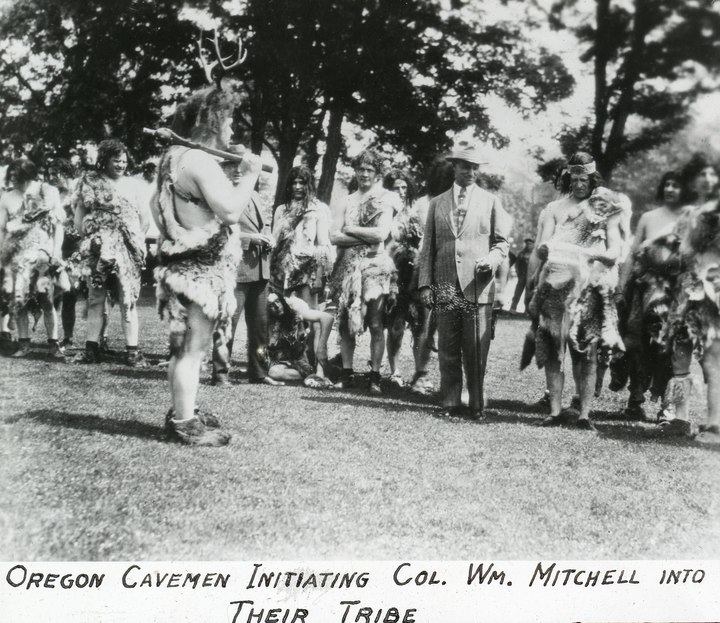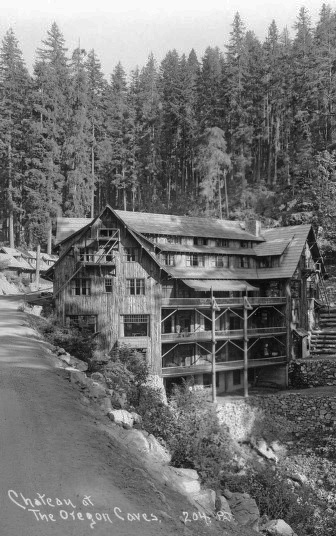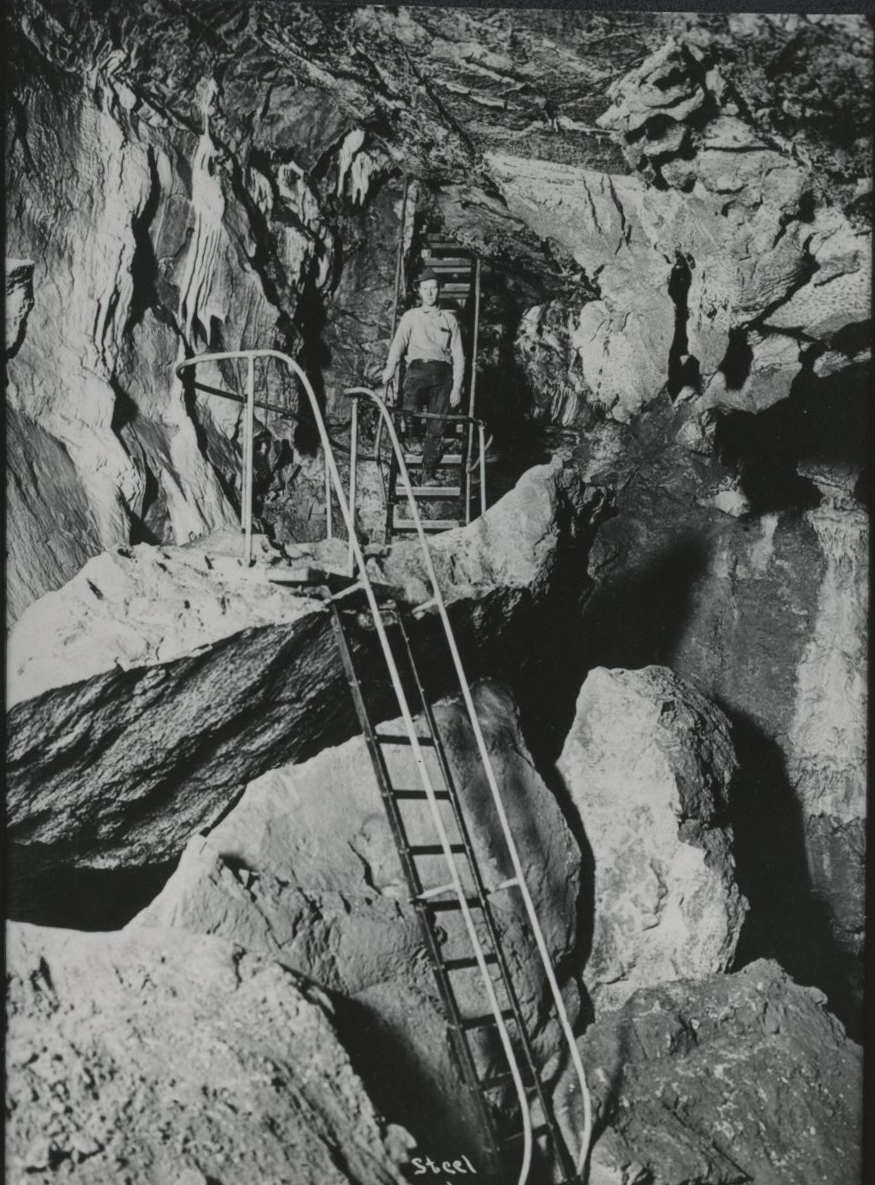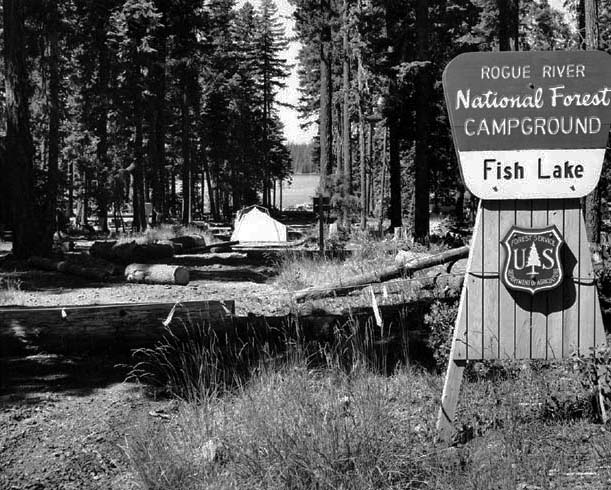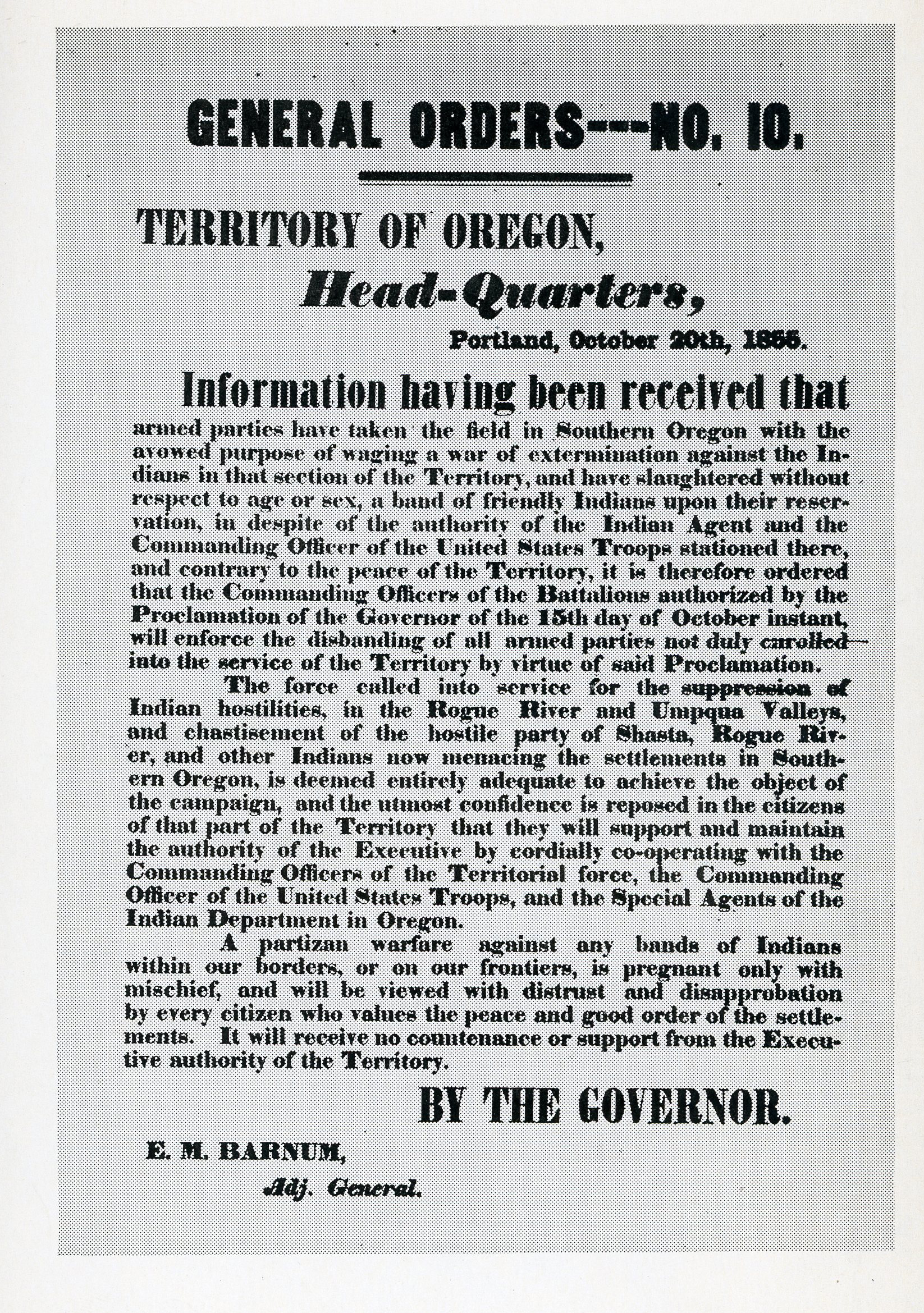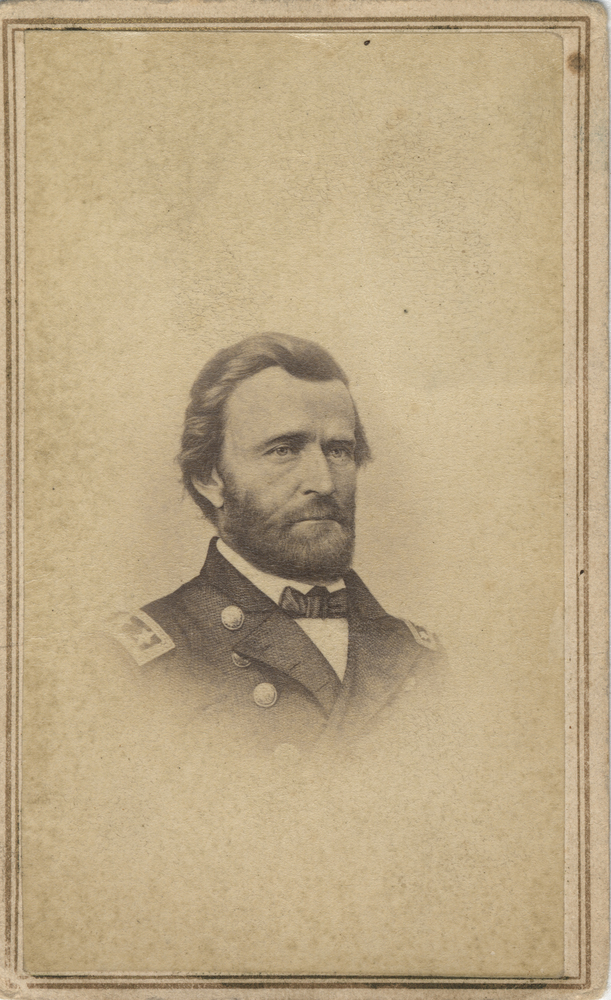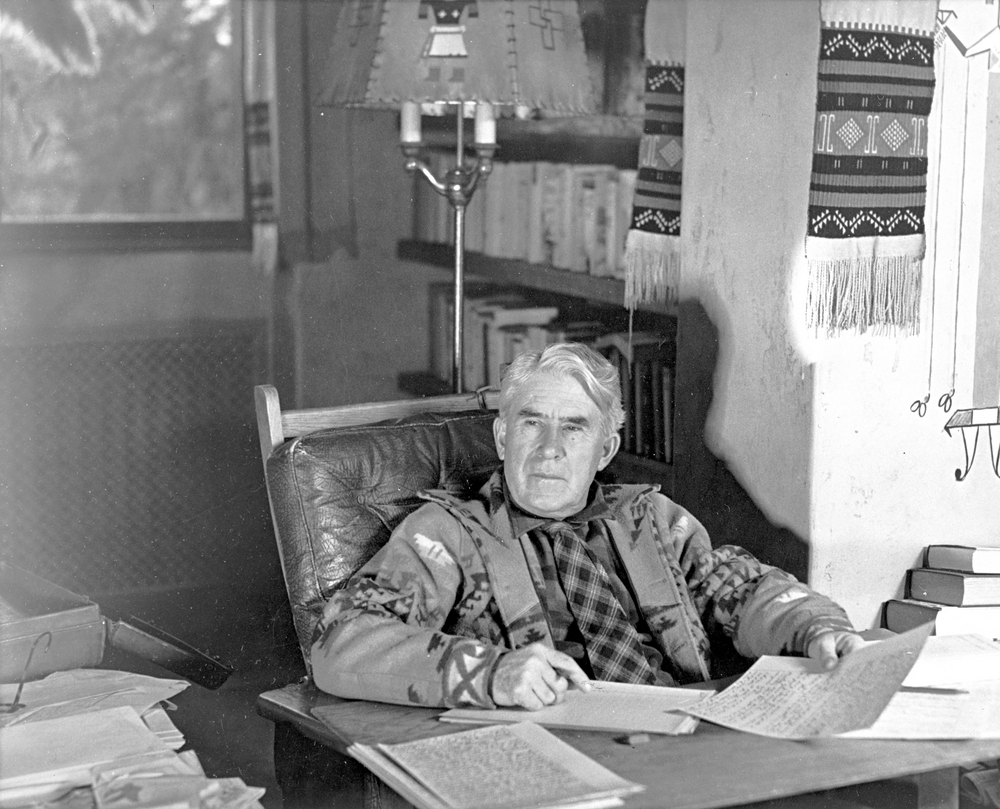Located on the Rogue River about thirty miles northwest of Medford, Grants Pass is the county seat of Josephine County. The area’s Mediterranean climate, with hot summers and mild winters, has long been a source of pride for residents, so much so that in 1920 engineer John Hampshire donated a sign to the city proclaiming “It’s the Climate!” That motto remains in place today. The healthy tourism economy in Grants Pass is supported by the many recreational opportunities along the Rogue River and by the nearby Oregon Caves National Monument and Rogue River-Siskiyou National Forest. The town also holds annual events, such as the Memorial weekend Boatnik festival held since 1959.
Grants Pass is located on land once occupied by the River Takelma peoples, who were forcibly removed by war and treaty (1853), following a devastating disease epidemic. Early resettlers of the land built a stagecoach stop on the Sacramento-to-Portland route named Grant, to honor Gen. Ulysses S. Grant’s 1863 military victory at Vicksburg, Mississippi. “Pass” was added to the name to distinguish it from Grant County. The area grew after the Oregon & California Railroad was completed to Medford in late 1883, and the town became a shipping hub.
In the 1880s, Grants Pass built a railroad depot, a courthouse and jail, a Methodist church, a brewery, a dam to provide power and water, and the first county bridge across the Rogue River. The town was originally a part of Jackson County, but the boundaries between Josephine and Jackson Counties were redrawn in 1885 to establish a railhead in Josephine County. Soon after, in 1887, Grants Pass was incorporated as the Josephine county seat, replacing Kerby. The population grew from 250 in 1880 to 1,432 in 1890; by 1910, it had more than doubled to 3,897. Grants Pass saw modest but steady growth over the next century, with 34,533 residents in 2010. In 2016, the city occupied about 11 square miles and had about 43 percent of the population of Josephine County.
From its earliest years until about 1930, the economy of Grants Pass was dominated by mining and agriculture. The Grants Pass Irrigation District, formed in 1916, expanded the variety of crops in the region, which included apples, pears, berries, alfalfa, cherries, grapes, hops, and melons. Agriculture would remain important to the city over the decades, but timber production would overtake mining until the last quarter of the twentieth century, when federal policies decreased timber yield.
During the 1920s, the Redwood Highway (U.S. 199) was built, stretching eighty miles from U.S. Route 101 near Crescent City to Grants Pass, and improvements were made to the 1,687-mile Pacific Highway (now Interstate 5), better connecting Grants Pass to the north and south.
The 1874 discovery by Elijah Davidson of the Oregon Caves, twenty-four miles southwest of Grants Pass, and the caves’ designation as a National Monument in 1909 led to commercial tours to the site beginning in 1922. As the town of Caves City (later Cave Junction) grew, Grants Pass business interests established the Oregon Caves Company, which built a resort at the caves and operated as a concessionaire to the National Park Service until 1976.
Beginning in 1922, the city was the headquarters for a men’s group known as the Oregon Caveman Club, whose members promoted tourism by dressing in animal skins and horsehair wigs and pretending to be descendants of Neanderthals. The 1931 replacement bridge over the Rogue River is known as Caveman Bridge, and a seventeen-foot-high fiberglass caveman statue, on an eight-foot-high pedestal, has stood over the city since 1971.
The Great Depression hit Grants Pass hard, with many locals working in New Deal programs or turning to small-scale mining. Public works projects provided jobs, including building a new post office and creating two New Deal murals, which remain in the post office today. Private funding supported the building of the Rogue Theatre in 1938. In the twenty-first century, the economy of Grants Pass is centered on high technology, medical care, tourism, retirement services, and the wood products industry. Businesses anchoring Grants Pass include Rogue Community College, Dutch Bros. Coffee, Fire Mountain Gems, Carson Helicopters, Hellgate Jetboat Excursions, and the Siskiyou Corporation, makers of scientific equipment.
The loss of timber funds and low property tax revenues at the turn of the twenty-first century led to citywide public safety layoffs in Grants Pass, high unemployment and poverty rates, and a countywide library closure in 2007. In 2008, volunteers succeeded in reopening the Grants Pass library as the nonprofit public corporation Josephine Community Libraries.
Grants Pass has a troubled social history, with outbreaks of religious intolerance and white supremacist activity. The Ku Klux Klan was active throughout Oregon in the 1920s, with an estimated Grants Pass membership in the hundreds. The Klan had a short-lived resurgence in Grants Pass in the 1980s and 1990s, and the area was targeted for an Aryan Nations’ organizing drive, cancelled after an anti-racism protest in the city drew 1,500 marchers in 1995. Militia activity spilled over into Grants Pass as well, most recently involving demonstrations by the Oath Keepers group against a Bureau of Land Management stop-work order at the Sugar Pine Mine in April 2015.
As early as 2013, the Grants Pass City Council held community meetings to address “vagrancy problems.” The city had limited resources for the unhoused, and as homelessness increased, the city aggressively enforced ordinances against outdoor camping. Unhoused residents signed on to various lawsuits against the city’s ban, one of which was appealed to the U.S. Supreme Court in 2024 after the plaintiffs won their case in the Ninth Circuit. In Johnson v. Grants Pass, the court ruled 6-3 that the ordinance penalizing sleeping and camping in public places did not violate the Constitution’s Eighth Amendment, which prohibits cruel and unusual punishment. In 2025, Grants Pass city councilors revoked funding to address homelessness.
Notable natives of Grants Pass include artist and cartoonist Carl Barks; actor Tyler Burrell; author and educator Agnes Baker Pilgrim; Gen. Merrill McPeak (ret.), who was Chief of Staff of the U.S. Air Force; and Dane and Travis Boersma, the founders of Dutch Bros. Coffee. Writer Zane Grey had a cabin (now a registered historic site) in the remote Rogue River Canyon, not far from the city.
-
![]()
Grants Pass, c.1885.
Courtesy Oregon Hist. Soc. Research Lib., Orhi9076
-
![]()
Grants Pass Railroad depot, 1887.
Courtesy Oregon Hist. Soc. Research Lib., 004015
-
![]()
Grants Pass, Oregon.
Courtesy Oregon Hist. Soc. Research Lib., 009003
-
![]()
Grants Pass, Oregon.
Courtesy Oregon Hist. Soc. Research Lib., Gi1280
-
![]()
Iron & Steel Works, Grants Pass.
Courtesy Oregon Hist. Soc. Research Lib., 022505
-
![]()
Rogue River Industrial Fair, Grants Pass, c.1912.
Courtesy Oregon Hist. Soc. Research Lib., 017343
-
![]()
Josephine County courthouse, c.1916.
Courtesy Oregon Hist. Soc. Research Lib., 015598
-
![]()
Robertson Bridge, Rogue River, Grants Pass.
Courtesy Oregon Hist. Soc. Research Lib., 008743
-
![]()
Harvesting a crop of oat hay, Grants Pass.
Courtesy Oregon Hist. Soc. Research Lib., 008288
-
![]()
Aerial of Grants Pass, 1947.
Courtesy Oregon Hist. Soc. Research Lib., 013221
-
![]()
Grants Pass, c1910.
Courtesy Oregon Hist. Soc. Research Lib., 59131
-
![]()
Oregon Caves resort lodge, 1931.
Courtesy Oregon Hist. Soc. Research Lib., 000369
-
![]()
A group on tour of the Oregon Caves, in overalls and with miners lamps, c1930.
Courtesy Oregon Hist. Soc. Research Lib., 002807
-
![]()
Oregon Cavemen posing in the Oregon Caves, c.1926.
Courtesy Oregon Hist. Soc. Research Lib., Portland Public School Lantern Slide Coll.
-
![]()
Oregon Cavemen posing by the Oregon Caves, c.1926.
Courtesy Oregon Hist. Soc. Research Lib., Portland Public School Lantern Slide Coll.
-
![]()
Oregon Cavemen, c.1926.
Courtesy Oregon Hist. Soc. Research Lib., Portland Public School Lantern Slide Coll.
Related Entries
-
![Athapaskan Indians]()
Athapaskan Indians
According to Tolowa oral histories, the Athapaskan people of southern O…
-
![Dutch Bros. Coffee Company]()
Dutch Bros. Coffee Company
In 1992, thirty-eight-year-old Dane Boersma and his twenty-one-year-old…
-
![Oregon Caves Chateau]()
Oregon Caves Chateau
The Oregon Caves Chateau was constructed between 1931 and 1934 as an ov…
-
![Oregon Caves National Monument]()
Oregon Caves National Monument
Only a few places in the Beaver State are named in reference to Califor…
-
![Rogue River National Forest]()
Rogue River National Forest
For over a century, the Rogue River National Forest has filled an impor…
-
![Rogue River War of 1855-1856]()
Rogue River War of 1855-1856
The final Rogue River War began early on the morning of October 8, 1855…
-
![Siskiyou National Forest]()
Siskiyou National Forest
The Siskiyou Forest Reserve was created on March 2, 1907; within two da…
-
![Ulysses S. Grant (1822-1885)]()
Ulysses S. Grant (1822-1885)
Ulysses S. Grant, a native of Ohio, graduated from the U.S. Military Ac…
-
![Zane Grey (1872–1939)]()
Zane Grey (1872–1939)
Inveterate angler Zane Grey, writer of highly popular Western fiction, …
Related Historical Records
Map This on the Oregon History WayFinder
The Oregon History Wayfinder is an interactive map that identifies significant places, people, and events in Oregon history.
Further Reading
Hill, Edna May, and Joan Momsen. Grants Pass Centennial Notes. CreateSpace, 2013.
Curler, Dawna. "The Oregon Caveman Club." As it Was, Jefferson Public Radio, July 27, 2005. http://archive.ijpr.org/Feature.asp?FeatureID=89#
Kramer, George, and Jill A. Chappel. Historic Resources Survey and Inventory of the Central Business District. Grants Pass: City of Grants Pass, 1992.
Momsen, Joan. Grants Pass. Arcadia Publishing, 2012.
Huntington, Howard. "Ku Klux Klan once burned crosses on Mount Baldy." Daily Courier, March 18, 2010. http://www.spokesman.com/stories/1995/feb/19/aryan-nations-is-recruiting-in-oregon-goal-is-to/
Knickerbocker, Brad. "New Armed Militias Recruit Growing Membership in US." The Christian Science Monitor, April 3, 1995. http://www.csmonitor.com/1995/0403/03015.html
Johnson, Kirk. "A Demand fo Safety, but Not on Their Dime." New York Times, July, 2013. http://www.nytimes.com/2013/07/06/us/In-Cash-Starved-Oregon-County-Citizens-Take-Up-Patrols.html
Vaughan, Jane. "With new leadership at the helm, Grants Pass drastically changes the city's approach to homelessness." Oregon Public Broadcasting. January 9, 2025.

